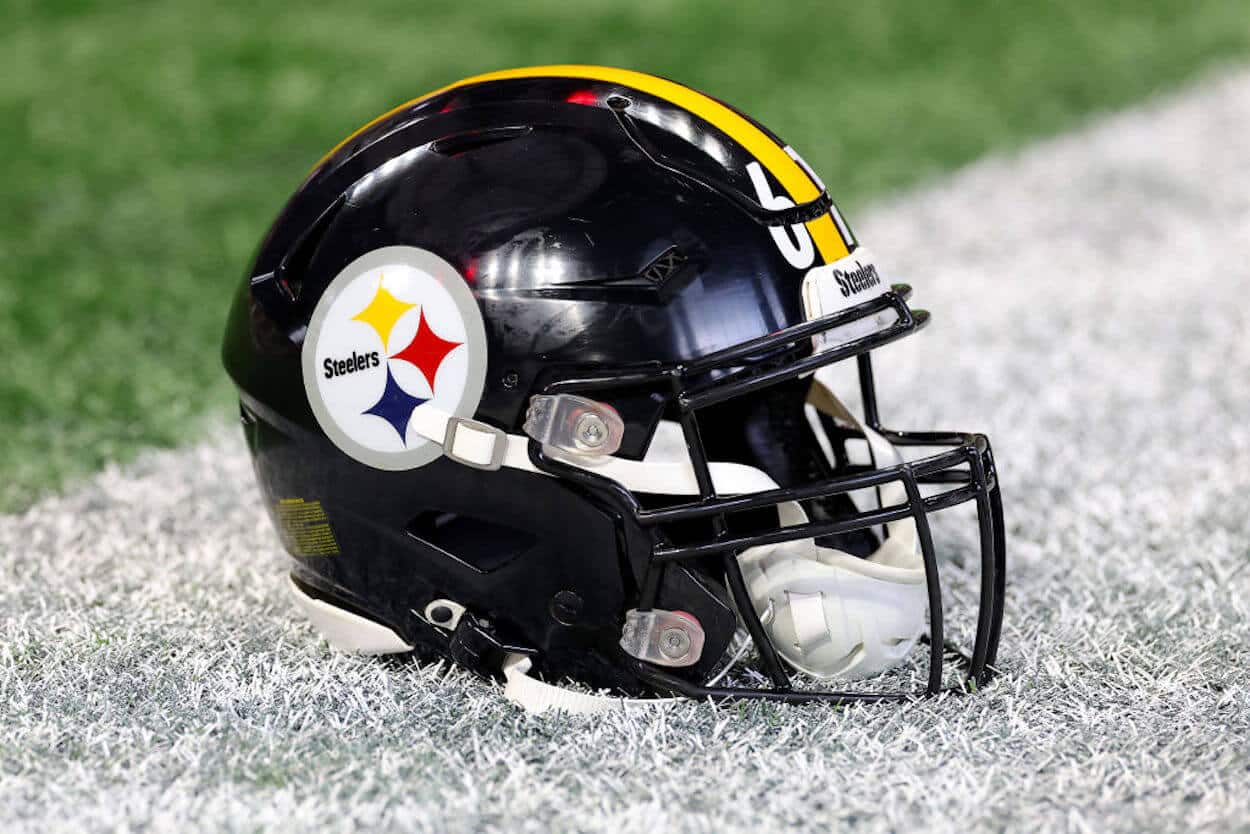NFL
Why Is Pittsburgh Steelers’ Logo Is Only on One Side of Their Helmets?

Across the world of sports, certain organizations stand tall. Even if you root against them, you can’t help but respect their rich history and overall body of work. The Pittsburgh Steelers are one of those iconic franchises.
Whether you live in the Steel City, on the opposite side of the Keystone State, or across the country, you’re probably familiar with the Steelers’ iconic black and yellow uniforms. And while that color scheme isn’t wholly unique — the Pittsburgh Penguins and the Pittsburgh Pirates also use it — the football team does have one notable wardrobe quirk: Their helmets only have logos on one side.
Given that this is the Steelers we’re talking about, you know that design choice wasn’t made on a whim; it has to have some historical grounding. So, with that in mind, let’s take a trip back in time to explore the origins of the team’s logo and why it’s only on one side of each player’s helmet.
The Pittsburgh Steelers logo unsurprisingly represents steel
Style and design can be rather fickle. What looks good today can seem horribly outdated in a matter of years. The Pittsburgh Steelers logo, which features three diamonds — one yellow, one red, and one blue — inside of a circle, has stood the test of time.
But have you ever wondered what that icon has to do with steel? As it turns out, quite a lot.
Allow Sam Farmer of the Los Angeles Times to explain:
It was originally the logo for the American Iron and Steel Institute and features a circle around three four-pointed geometric shapes called hypocycloids in yellow, red, and blue. Those colors represent the three materials used to make steel: yellow for coal, red for iron ore, and blue for steel scrap. The Steelers petitioned the AISI to use the logo and, inside the circle, change the word “Steel” to “Steelers.” Also, AISI uses an orange hypocycloid instead of red.
And there you have it. The Steelers are (essentially) wearing their namesake on the side of their helmets.
Why the Steelers’ logo is only on one side of the helmet
So, now we’ve established what the Pittsburgh Steelers’ logo represents. But what about its unique placement on one — rather than two — sides of the helmet? While that answer isn’t as steeped in history as the logo design, there’s still a story behind it.
“It’s a very simple story: It was an arbitrary decision by the equipment manager,” Joe Gordon, the team’s former communications director, told Farmer. “Dan Rooney [whose father, Art, founded the franchise] told him to put the decal on the helmet, and he just went ahead and did it and put it on the right side only. Dan was not specific as to whether he wanted it on both sides of the helmet or just the one side. So once it was done, he never changed it.”
And did anyone ever consider following the rest of the NFL and adding a second logo? The topic, it seems, just didn’t come up.
“I was there 29 years, and that was never discussed,” Gordon added.
Thanks to some rich on-field history, the Pittsburgh Steelers are an iconic part of the NFL landscape
While the cliche might say that clothes make the man, things are a bit different in the NFL. The Pittsburgh Steelers might have a unique color scheme and logo, but that, in isolation, doesn’t establish the club’s place in history. The on-field results, however, have more than accomplished that.
The franchise was born in 1933 and initially took the field as the Pittsburgh Pirates. Good results were hard to come by during those early days, but everything changed in 1966. With the NFL-AFL Merger on the cards, the Steelers agreed to shift into the AFC. That came with a $3 million relocation fee, providing the franchise with some much-needed capital.
The worm then started to turn.
Head coach Chuck Noll arrived from Baltimore and took charge of the team. The likes of Terry Bradshaw, Mel Blount, Mean Joe Greene, Franco Harris, Lynn Swann, and Jack Lambert came to Pittsburgh via the draft. Then, the wins started piling up. A dynasty had come together in real-time.
The Steelers, who struggled to put together a winning season for much of their early history, won their first Super Bowl title in the ninth edition of the big game. That wasn’t a one-off, though. The Steel Curtain would lead the club to three more titles, giving Pittsburgh four championships during the 1970s.
While things flatlined a bit during the 1980s, Bill Cowher returned the Steelers to form during the 1990s. His teams consistently made the postseason and appeared in six AFC Championship games; they’d only win one Super Bowl (40), though. Mike Tomlin then took over and, in February 2009, earned a Super Bowl ring of his own.
Have there been some ups and downs? Of course, and there will continue to be. But when a franchise has six Super Bowl titles — not to mention a unique color scheme, logo, and helmet design — it becomes a recognizable part of the furniture, independent of current results.











